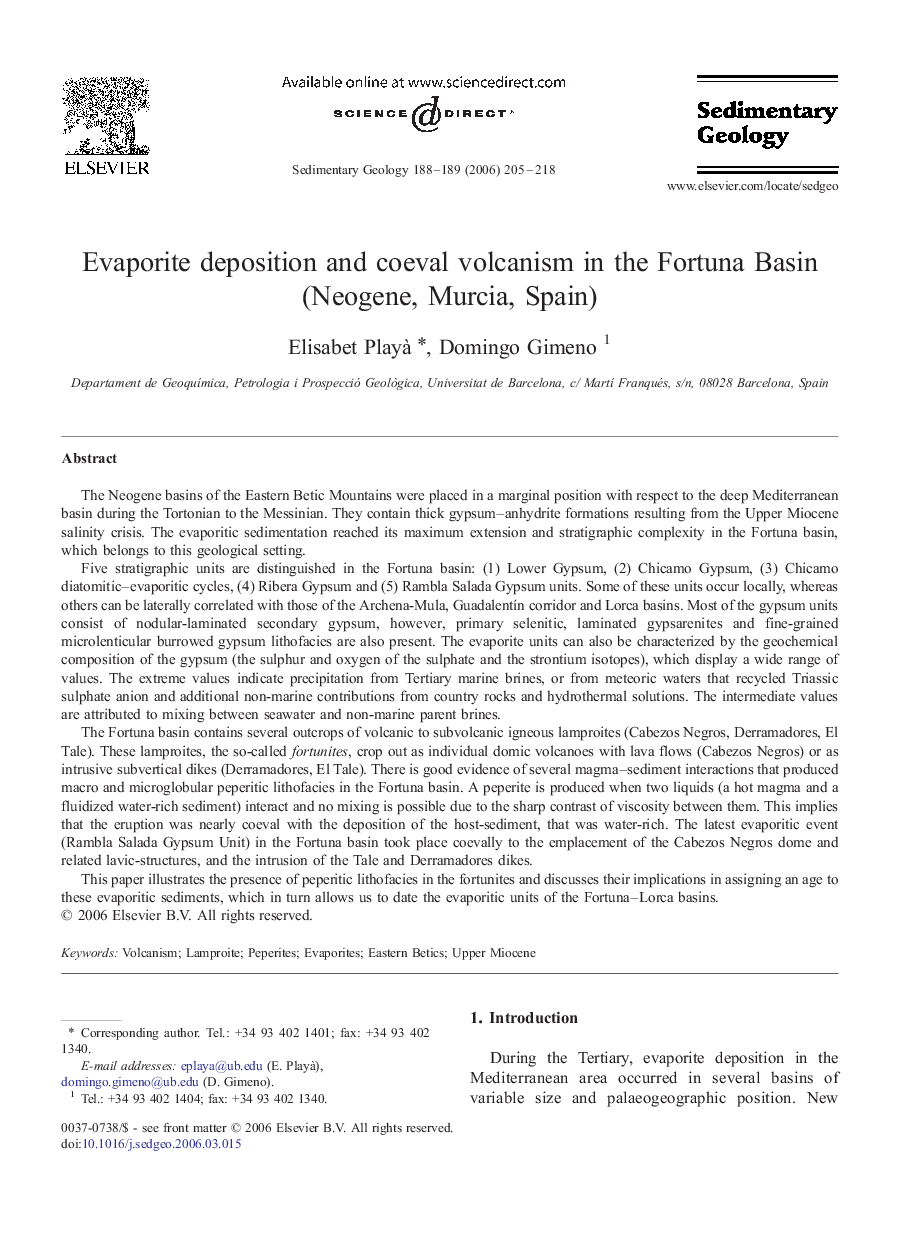| کد مقاله | کد نشریه | سال انتشار | مقاله انگلیسی | نسخه تمام متن |
|---|---|---|---|---|
| 4691069 | 1636184 | 2006 | 14 صفحه PDF | دانلود رایگان |

The Neogene basins of the Eastern Betic Mountains were placed in a marginal position with respect to the deep Mediterranean basin during the Tortonian to the Messinian. They contain thick gypsum–anhydrite formations resulting from the Upper Miocene salinity crisis. The evaporitic sedimentation reached its maximum extension and stratigraphic complexity in the Fortuna basin, which belongs to this geological setting.Five stratigraphic units are distinguished in the Fortuna basin: (1) Lower Gypsum, (2) Chicamo Gypsum, (3) Chicamo diatomitic–evaporitic cycles, (4) Ribera Gypsum and (5) Rambla Salada Gypsum units. Some of these units occur locally, whereas others can be laterally correlated with those of the Archena-Mula, Guadalentín corridor and Lorca basins. Most of the gypsum units consist of nodular-laminated secondary gypsum, however, primary selenitic, laminated gypsarenites and fine-grained microlenticular burrowed gypsum lithofacies are also present. The evaporite units can also be characterized by the geochemical composition of the gypsum (the sulphur and oxygen of the sulphate and the strontium isotopes), which display a wide range of values. The extreme values indicate precipitation from Tertiary marine brines, or from meteoric waters that recycled Triassic sulphate anion and additional non-marine contributions from country rocks and hydrothermal solutions. The intermediate values are attributed to mixing between seawater and non-marine parent brines.The Fortuna basin contains several outcrops of volcanic to subvolcanic igneous lamproites (Cabezos Negros, Derramadores, El Tale). These lamproites, the so-called fortunites, crop out as individual domic volcanoes with lava flows (Cabezos Negros) or as intrusive subvertical dikes (Derramadores, El Tale). There is good evidence of several magma–sediment interactions that produced macro and microglobular peperitic lithofacies in the Fortuna basin. A peperite is produced when two liquids (a hot magma and a fluidized water-rich sediment) interact and no mixing is possible due to the sharp contrast of viscosity between them. This implies that the eruption was nearly coeval with the deposition of the host-sediment, that was water-rich. The latest evaporitic event (Rambla Salada Gypsum Unit) in the Fortuna basin took place coevally to the emplacement of the Cabezos Negros dome and related lavic-structures, and the intrusion of the Tale and Derramadores dikes.This paper illustrates the presence of peperitic lithofacies in the fortunites and discusses their implications in assigning an age to these evaporitic sediments, which in turn allows us to date the evaporitic units of the Fortuna–Lorca basins.
Journal: Sedimentary Geology - Volumes 188–189, 15 June 2006, Pages 205–218